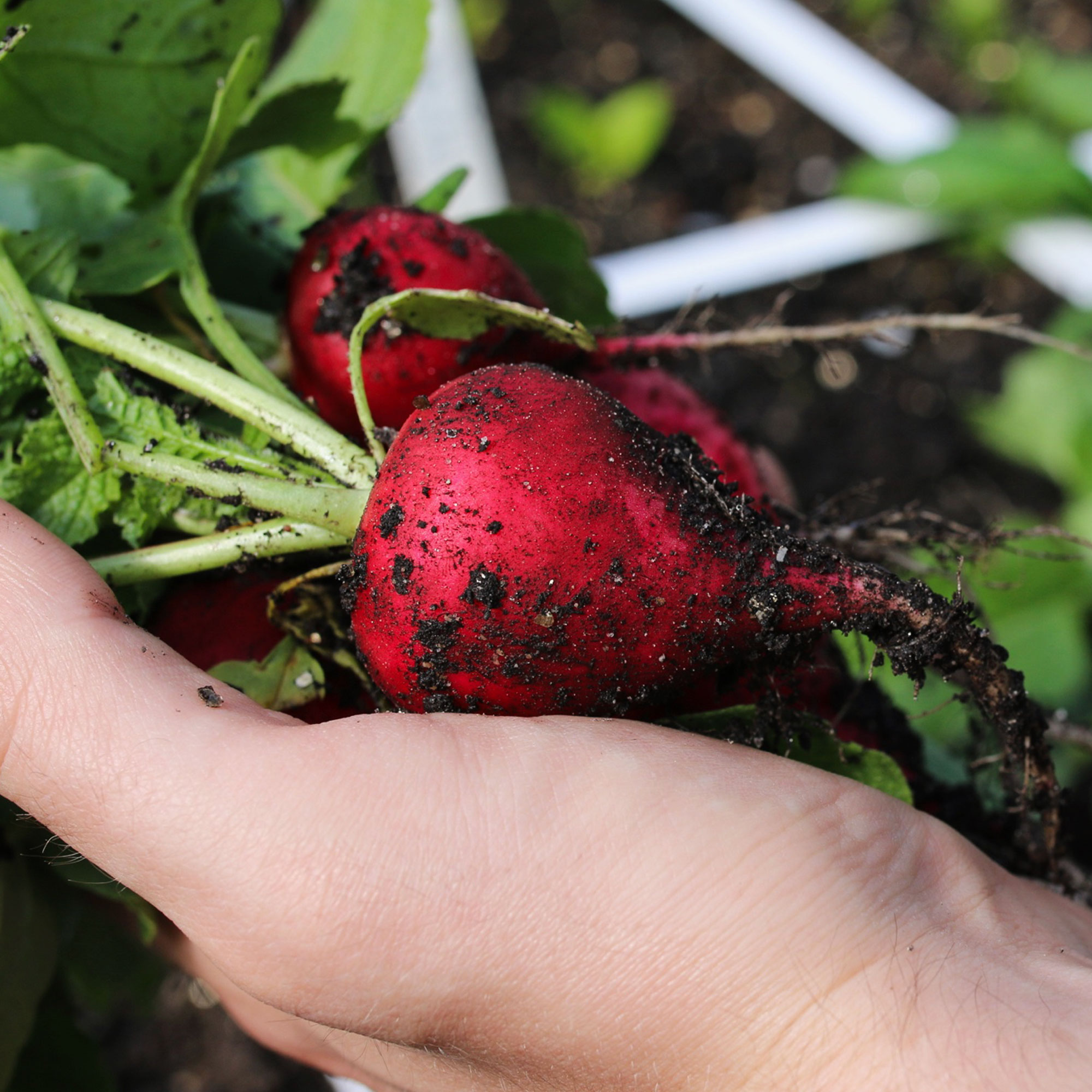













Giant Radish
Product information
€ 2,49
Reviews
325 reviews
4.75 out of 5 stars
Description
Free delivery from € 30 🇳🇱
In the app
Sowing: 1 September - 15 October , 1 March - 30 June

Level 1
seeds are sown

Level 2
first seedlings

Level 3
thinned seedlings

Level 4
little plants

Level 5
first harvest
Height: 15-25 cm
Contents: ± 240 seeds for 5/7 patches
- Currently only shipping to the Netherlands and Belgium
- Choose your preferred delivery date
- Sent by PostNL or Transmission
- Track & Trace in your inbox
- The app helps you with almost everything you do in your vegetable garden: sowing, tending, and harvesting.
- If something goes wrong, the app tells you what steps to take.
- If that doesn’t work, you can ask us for advice.
- If that still doesn’t help, we’ll look for other solutions together. Until we get it right.
More about our Giant Radish
This variety produces super large radishes in 4-6 weeks: as big as a ping pong ball. They don't get woody or spongy and have a deliciously mild flavor.
- Type: Giant Radish Riesenbutter
- Family: cruciferous
- Number per square: 16
- Height: 15 to 20 cm
- Sowing time: March to June and September to mid-October
- Sowing depth: 0.5 to 1 cm
- Germination time: between 10 and 25°C in 3 to 11 days
- Time to harvest: from 4 weeks
- Sunlight: can be in both sun and partial shade
- Packet contents: ± 240 seeds - for 5/7 patches
Sowing and growing Radishes
- poke 16 holes in the section (no deeper than 1 cm)
- put 2 to 3 seeds in each hole
- gently close the holes

Then it's time for thinning out. It's tough to do - but with radishes, it's extra important because the root needs to grow into thick bulbs.
If the plants are too close together, only the leaves will grow, and you won't get radishes. That also happens if you try to transplant them, as it damages the root.

Plus, the plants can handle the cold just fine:


Wat heb je nodig?
- a spot in a vegetable garden box
- Makkelijke Moestuin mix
- a place with at least 6-8 hours of sunlight per day
Is Giant Radish healthy?

How do yo use Giand Radish?
But you can also stew, fry, or roast them in the oven. They become juicier and a bit milder in flavor.
Don't forget the leaves, because you can eat those too. Young leaves raw in salads and slightly older leaves in mashed dishes, stir-fries, or pasta.

